As tyranny mounts, it’s time to focus on strategic, effective, non-violent resistance.
We can draw millions to march in protest against Trump’s actions, but we need to focus on the problem we’re trying to change, and tactics. Luckily, we’ve got a lot of global examples to learn from.
Photo: Wally Skalij
April 15. Tax Day. And day…what?... 85?... something like that…since we stepped into what has so quickly become the unimaginable. Every day, every week, we encounter a new lowered bar of what we view as intolerable. I wondered before I started this journal what my parents felt as students, as WW2 arrived to Europe and they watched German soldiers take over Paris and witnessed fearful neighbors capitulate and others resist occupation and tyranny. We are not occupied here, but we are in that full, rapid, descent into authoritarianism. It’s a long word but it definitely fits what we are witnessing unfold, with daily incidents that set a new bar of lawlessness and impunity.
That word in particular – impunity -- marks authoritarian rule. It reflects the uncertainty and at times helpless feeling we have about whether we can stop illegal or harmful actions being taken by people acting in the name of this new government. I refer to it as a regime because it daily demonstrates an intentional disregard of our federal laws, in order to make visible its power and ability to impose its ideas and orders on the largest number of people.
There is only one overall goal and it is to instill fear and even terror in the lives of the majority. The power they are gaining comes from a capricious flexing of a seized state authority to arrest, detain, act cruelly, and express little regard for legal guardrails that were created by Americans up to now as agreed-upon rules of governance and civility in a democratic society, albeit flawed and full of problems.
That is what we are witnessing daily: the flexing of a newfound state power to act with impunity. To act without warning to pick off people among us and instill fear in everyone else as a result – but intentionally. We are witnessing the use of new technological weapons to surveil us, identify us, hunt us, and make us feel unsafe in our daily actions on our phones, out and about, living our normal lives. That is a feature of this regime that is new to us, that makes us all feel like we entered a shadow state of Putin’s Russia more quickly than we might have imagined possible. Not even three months, and we feel ourselves settling down, like getting into an ever-cooler bath, adjusting to another layer or degree of lawlessness or impunity. And every day, we decry it in our heads and maybe out loud, as we work to adjust to this new surreality. That is autocracy, I know now. This is it. We are here.
There isn’t a friend I have or even casual acquaintances who aren’t asking themselves if it isn’t safe or smart to travel outside the country, who hasn’t considered their own degree of risk of being arbitrarily stopped for no good reason upon re-entry from vacation into the country on suspicion of being judged somehow an enemy or critic of this administration. Of harboring some views suddenly possibly deemed un-American in the new McCarthyism we have so quickly fallen into, one in which our phones can be seized, our personal data available for the regime to look at, at a whim. Why? On a suspicion that everyone might be a possible enemy of America.
Photo: Fox 5
Just a short 85 days and we read daily about a few unlucky visitors and one or two citizens who got stopped, were denied entry at an airport, then deported, despite having green cards. Or got pulled aside and grilled for hours about a given text or social media tweet on their Iphones. We’re not idiots: we see the police state flexing its muscle to tell us, this could be you. To warn us, be aware, be afraid. Shut up and make yourselves small and follow the rules or you could be next.
Everyone is absorbing this message as we scan the news, grimace at some headline about a student or someone’s uncle who’s been here for ten years and is now missing or sitting in an inhumane ICE facility, unreachable by lawyers or family, their future uncertain but absolutely grim. That is the face of capricious cruelty, a classic feature of autocracy. The authoritarian needs to make examples of a few to scare the rest. So now almost all of us, including those who voted for the people now in office, feel increasingly worried about this capricious invisible AI-guided digital long arm of the police state. We no longer feel safe because we no longer are. And we know it. And they know it. And that is the nature of power. That is their victory – for now.
It’s not as if we weren’t abstractly aware that our online connected lives and smart technologies allowed others to track us; we knew. But we did not feel a malevolent force was seeking to exploit this, as we do now. Now, we have a set of individuals who have banded together to make use of surveillance tools to exert their power to hurt and imprison us, and especially, silence us and control access to our tax money and services that we depend on to live. All of us, the paperless and the papered, the visiting and the citizen, feel the weight of the overnight surveillance state upon us.
Photo: David Ryder | Reuters
It's all been made strikingly visible so quickly by the takeover of our federal government system and the tech coup that has been brilliantly, albeit illegally, executed by the cabal of tech engineers who work for America’s richest billionaire, Elon Musk. A man who seems very motivated to seek and wield power, nearly as much as the man who’s been elected president and the cabal of his acolytes. A den of people very lustful for power. It’s important to acknowledge how successful this coup is, I think; that doesn’t make it less awful or evil. But it’s incredible how much power the new technologies have given this small knot of men or women who now bark orders at everyone else, firing millions with indifferent or cruel glee.
So yes, we are all newly aware that our movements are watched, and we can’t easily disconnect from that surveillance. And it’s not as if we are doing anything criminal or bad. The problem is that democracy itself has been criminalized, and with it, the values we cherish, the very ideals that make up the guardrails of our freedom. That is what makes us recognize that anyone can now be viewed as suspect by a state power intent on criminalizing what is not criminal.
I’m talking about freedom of speech, and being able to voice dissent, and criticize the policies of those in power. I’m talking about pieces of paper that establish our identities and give us authority of movement across borders: passports, birth controls, identity cards, green cards, voting cards, tax records, Social Security numbers, bank accounts, school visas… all of it contains personal data that is being weaponized by individuals ruthless with intent to rule with impunity. Our social media, our public commentary and conversation, our snarky reposts of memes and cartoons about politicians we especially oppose… all of it may now serve as tinder for a political auto da fe.
AS we walk around our ordinary day, sniffing the air, seeing the blue sky and feeling spring and warmth coming, we remain acutely aware that somewhere across our beautiful land, people with malintent are honing in on someone they have deemed undesirable -- to warn, threaten, arrest, detain, deport and perhaps forever imprison. And then – this is the newest chill factor -- throw away the key, as they have done to some people imprisoned in El Salvador.
Some 500 people protested a former women’s prison, FCI Dublin, becoming an ICE detention center in growing citizen vigils at ICE centers. March 1, 2025
That’s what we’ve been witnessing these past two weeks. That’s the truly chilling realization we’ve all come to, overnight, after hearing the man who would be king say, casually, then more confidently, that he’d like to send US citizens now in federal prisons to be imprisoned in El Salvador torture centers, too, not just immigrants he’s sent there. He’d love to purge American of those he views as the worst criminals.
And we aren’t dumb, as I said; we understand he’s talking about not just Americans convicted of serious crimes who are doing hard time inside American prisons, but anyone he views as a problem – meaning someone he doesn’t like. That’s how a king rules, and this president would be king. He had the gall (which still stands out to me as an amazing low moment, almost comical if it wasn’t real) to issue a magazine cover that his administration created, showing him wearing a crown and sitting behind his Oval Office desk. You almost want to feel sorry for a man who so much wants to be worshipped, to wield that power, to have a court. But then you catch yourself, or at least I do, and think, this is serious to him. This delusion, this surreality. He’s bought into a myth of himself. If the coat fits, he thinks, trying it on.
Solidarity protest for Mahmoud Khalil, NYC
Photo: AC d’Adesky
He's no king, and this regime has been well-described as closer to a mafia criminal enterprise, one ruled by force, with power concentrated in the hands of one mob Boss. One major goal is to gain wealth, by jiggering the rules. That’s what we just witnessed when Trump enacted mad tariffs, threatening our economy and those of other countries, tanking people’s 401Ks and retirement plans, and causing people to lose a lot of money. Then he tipped off his followers off to his plans, those who subscribe to his social media, Truth Social, to buy quickly and they did, buying up the stocks that had plunged just hours before he then hit the pause button on his insane tariffs. And afterward, we witnessed the grotesque spectacle of Trump congratulating several billionaire friends and himself, too, for having reaped billions by acting fast on his tip.
It’s insider trading, yes, and now it will be investigated but it’s already a done deal. It happened, and Trump dispensed of the rules, and some of his closest associates made more big money, and they are now more beholden to the would-be king than before. That’s the glue and power of a mafia: it’s control by fear and terror and criminality. It’s rule by loyalty to the Don. Know your place and follow the rules and you might not get killed, you could get richer.
So that’s our world, on day 85 or so of the new American presidency.
Photo: scentXmedia
It’s also exhausting, which I suspected it would be, and that does make me realize I have to shift my attitude and actions so I can live under this descending hammer of a would-be dictatorship without losing too much of my balance. I have to find a way to change my daily habits away from the current rapid-response one that’s required to respond and fight the hammer blows, to mitigate the harms, to shore up any guardrails that stand, and erect as many new ones as I can with all the other people who oppose this state capture.
I have to both move quickly every day and begin to adopt a mid-range view of the battle, then, and shift a longer-range one. Essentially, I have to become a runner who’s ready to sprint at a moment’s notice, but is adopting the pace of someone running a 5 or 10 K, not a 100-yard dash. And I have to be getting myself in shape as I do for the much longer challenge of the much longer road – a true marathon -- that we’ll all have to walk which extends itself to at least four years of the current administration and possibly longer.
The task at hand demands that we imagine the America we want to inhabit after the Don and his minions are gone, after we’ve found a way to endure their capricious, punitive reign, and fight them in a million creative and steadily more effective ways, and rebuild our system of law and decency, and join hands with the great majority who completely oppose what is happening to our country with this lawless regime. That’s a long road to walk or run.
It also demands we look beyond this moment to understand we need to live and breathe and balance ourselves for making it to that longer point. Because it’s deeply unhealthy to live as we are currently living at this moment, 85 days in, with our held breath, wondering what is coming next, today, the next bad headline, and it’s unhealthy to be anxious as we collectively are now about our already precarious financial futures, and our access to health care, and it’s very unhealthy to be worried about if we can freely travel outside the boundaries of our own country and return safely, and it’s equally unhealthy to be really unhappy and worried about the world we are creating for our children, whether young adults or smaller, who are confronting a very much diminished world and set of expectations than we’ve been privileged to enjoy in this country up to now.
Hundreds of UC Berkeley students and faculty protest Trump crackdowns on free speech
Photo: Karl Mondon/Bay Area News Group
I’m talking about the essential freedoms again here: of speech, of dissent, of access to public education, to teach and learn, to travel. This bothers me a lot – the changed world that is taking shape daily that my own daughters, who are in their 20s, are being forced to confront and navigate. It doesn’t resemble a safe place I want them to live or accept, and I grieve for their generation already. The world is not a happy place, politically, for us, and thus, not for them. And they are doing their best to navigate it, but it’s heartbreaking for us, the parents, not to be able to offer them a safer, more joyous world in which they can go forth to build beautiful futures.
We can’t shield them from this capricious regime and we are vulnerable and we are standing up to the despot but they also read the news; they’re also on social media. They are smart, and beautiful, and they are absorbing everything, and that makes us worry -- for them, for the future we will leave them if we don’t do our hardest battle right now, daily.
That’s why I suppose I woke up at 5 am. Again, I think. Another night of not-great-sleep. I know I must change that; it’s not so healthy. I know it’s best to look away from the phone and the headlines at 10 pm so I’m not still reading about bad news and scheming about what to do to fight it and do my small part as effectively as I can at 1 am. But I also feel a responsibility to be fully informed, and now, with the weight of a crushing force seeking to impose itself more forcefully upon us, good sleep has become among the first things to go.
This, I now realize very well, is also a classic feature of autocracy. The great populace does not sleep easily. Vigilance replaces a calmer mind. We will have to work to defend the spaces of joy and rest and happy connection and creativity that demand as much if not more space in our minds and hearts as a counter to the political attacks we are enduring.
So that is the task: to seek and find balance, a long-distance runner’s view of the race and its challenges and a daily exercise of building up the muscle and endurance to manage it. Somewhere in the, I must find a way to build in a pattern of better sleep. I will, now that I am aware I have invited creeping vigilance to enter my mind and establish internal guardrails to protect myself that offer a sense of personal control against the capricious cruelty that is beginning to swirl around us. I will try, anyway. But I won’t sweat it, either. Sleep is clearly a luxury, and a hallmark of democracy, then. Easy sleep is not what people living under tyranny do so well. I’ll have to learn to nap more as a pivot, maybe.
Paola Paiva, sister of Venezuelan singer Arturo Suarez, 33, sent to CECOT prison in El Salvador, lights candles in front of a mural depicting her brother, in Caracas, Venezuela April 2, 2025.
Photo: REUTERS/Gaby Oraa
What else? Well, there is so much else. My mind is full of what I read by day and what I find deeply upsetting. It’s very hard – so hard I stopped trying – to put away the pictures of the rows of young men, freshly shaved, and sitting in rows on the ground, heads pushed down, pressed together like human sardines with their hands locked behind their backs, in the CECOT anti-terrorist prison in El Salvador where this administration has sent the undesirable. The images are revolting. And when I learned details of their confinement, I felt my horror rising, internally; I wanted to shut it down.
I know very well that creating images like these, of grave dehumanization, is also an essential feature of fascism. Propaganda is critical to tyranny. That’s why I felt so disturbed, because the images did, in fact, remind me of Jews in the concentration camps of Europe. Not in Auschwitz, but in the earlier days. The start. The CECOT images spoke of complete control by one set of people, armed with big weapons, over others they had stripped of individual markers of clothing or identity, and shaved bald, and forced to sit hour by hour in what is immediately evident as a form of torture. The helplessness of the prisoners, and by extension, our helplessness to stop this, and rescue them, is intentional.
I am paying close attention to this now. The necessity of dehumanization. The importance of acting without warning to cancel student visas in a student database, to cancel one’s identity as a legal visitor, to render them illegal and criminal, in a single, simple administrative push of a computer button, somewhere. It’s a form of Nazism – the same mentality. It’s horrible, and it’s brutal, and it’s frightening, and it’s very effective. And it acts without a face, with an invisible hand, which give the blow that much more power. It dehumanizes, and it is, in fact, attached to a technology that is not human, though it was made by humans and is being wielded by humans to hurt and punish other humans.
This inhumanity, the dehumanization, the manufacturing and naming of the Other… the dividing of people in a society into the invited and the rejected, the legal and illegal, the real people versus those deemed less than real… all of it is planned, intended, strategic.
Dehumanization is something we must directly counter-strike. We have to put a human face and story upon everyone in that CECOT prison, anyone picked up by ICE, all those students being villainized, and we have to invite and create public platforms for their loved ones and friends to speak up for them, to defend them. We have to raise up their voices and our humanity and what is decent to counter what is truly inhumane, which is the regime’s treatment of ordinary people, many innocent of any crime or affiliation with any gang, who’ve been given a virtual life sentence of hourly torture now in CECOT. We can’t just decry it and let it happen. We must do more to make it stop.
This week, the president told us he wants to put American citizens in facilities like it. He hopes that El Salvador will build five prisons like it. We’ll buy them, and pay Salvador’s Bukele regime to run them for us. The outsourcing of black site detention-torture, then.
There are Americans who are racing to get the contracts to help run them, Americans who live in our neighborhoods and work for Geo Group, one of the main private contractors racing to help ICE arrest and deport millions, to reap millions to billions in profit. The goal is wealth. A wealth that has allowed the people building the new transborder American carceral system to cut themselves off from their own humanity and confine others to conditions of torture and close the door and look away. That is what we must counter, too. We have to confront those who are collaborating, facilitating, profiting. There are a lot of Americans helping to torture these innocent people and we have to call them out. We will; I will, I’ll do my part. I know you will too. We must.
Faith leaders join, Prince George's County community members and immigration advocates in prayer vigil for Kilmar Abrego Garcia, a Maryland father mistakenly deported in error to CECOT prison El Salvador that Trump refuses to bring home.
Photo: 7News
That means we have to tell their stories; we have to seed our days of battle ahead with the humanity that the administration is working so hard to remove from the people it is targeting as the first wave of people to remove. The rest of America are in the later waves of possible attack and removal. We know that now. Trump told us himself, this week. The deportation plan is a social purge, not so different from what Hitler did with his undesirables. He began with arrests, deportations, and later, a final solution to those he viewed as Other, social undesirables.
I am not saying we are at or headed to that state of a full fascist, but the early steps here are similar: Other, dehumanize, and criminalize. First immigrants, then students, then green card holders, then a few citizens, including poor Juan Abrego Garcia, a US citizen mistakenly deported to CECOT. Trump won’t bring him back because he wants us to understand, being a citizen offers you no protection. He will criminalize and deport whoever he wants. That is the definition of absolute power.
So yes, there are reasons we aren’t sleeping well. We wake, as I have, at 5 am, concerned, and thinking.
Me, I’m in a homework phase, and have been for weeks. I am watching a great mobilization of Americans join marches to resist this rising lawlessness and it makes me grimly satisfied, to know the majority will take action to say No. But I am also seeing we lack strategy, and we need organization fast, and effective tactics.
New York City protesters demand an end to kidnappings of migrants by ICE, Feb. 2025
Photo: Steve Sanchez/Sipa USA via Reuters Connect
Up to now, with the attacks coming at such a furious pace, on so many fronts, it’s been very challenging to keep pace, which makes it all the more challenging to frame the problem we are hoping to fight and stop. That’s an essential step to effective resistance, to fighting a battle. You have to sight the enemy as clearly as you can, and understand their tactics, and you have to gain a sense of what the most important targets are, and what ammunition and troops you can use to what effect. I’m using war metaphors because they are apt. And up to now, we’ve raced to keep up with the attacks, to just take them in, all the while trying to get a decent grasp of what the problem is that we have to contend with.
Now, we’re there. The breadth, the depth, of the attacks are visible. We can see we are looking at a full, technologically-dependent, authoritarian regime, and we see its ideology. We had the far-right conservative handbook, Project 2025, to provide an early view of the larger agenda, the long view of a society embracing hard-right libertarian ideas and a Christian nationalist fever dream of future Christian conservative American empire. So we know where they want to go, and having achieved so much in 85 days, how much more draconian it appears in reality versus on paper. We have those men sitting in human chains of suffering in CECOT imprinted in our brains.
But we have lacked the strategy to fight back, until now. Because you have to know how you are defining and viewing a problem in order to consider effective solutions.
Photos: Instagram | Brave New Films
Now we – the big we of everyone who is mobilizing – are hungrier than ever for strategy, for tactics. We are a large, loose, decentralize nation of people forming into groups to march in protest, to signal our opposition to the assault on our system of governance, our rules of law, our norms, our human values of respect for others, our humanity. We were 5.2 million marching last week; we can double that and more. But we need strategy. We need to sight the problem and what we seek to achieve, concretely, via what means, and do so pretty quickly. What is it we seek to do? What are the most important changes we seek? Who is mobilizing? What are known, effective tools for that fight? What example can we learn from. Etcetera.
So that’s what I’m focused on. We need to unite the main groups who are organizing and name and ask them to name a few priority targets of concern, and see what that looks like, so we can develop a rapid-response platform for action. We can then start offering the millions who are showing up to march something more to do -- additional steps and actions they can take, big and small, toward that goal. A tactical platform for a very decentralized building movement of people. The current mobilizing of visibility is essential and it’s more than symbolic; it gives face and voice to a building mass resistance movement. It makes visible the potential scale of people’s power. Yes. But we need to offer those arriving to march a more concrete roadmap to fighting back. A war plan. That’s my focus now.
This past weekend I began speed-reading several books that have been published in recent years on the making and ingredients of autocracy, in order to see what others who have studied the problem elsewhere have to say. They’re insightful about the problem, but that is always the easier part. The reason we don’t have more effective strategies is that it’s easier to name and analyze the problem but harder to distill the solution.
I’ve read through How to Lose a Country – The 7 Steps from Democracy to Dictatorship, by Ece Temelkuran, and re-skimmed the very tidy primer by Timothy Snyder, On Tyranny, with its little capsule Twenty Lessons from the Twentieth Century. I’ve marked pages of Srdja Popovic’s Blueprint for Revolution, and Ruth Ben-Ben Ghiat’s Strongmen, Mussolini to the Present. Before that, I re-read Anne Appelbaum’s Autocracy Inc., and another tidy volume, The Little Black Book of The Populist Right, by Jon Bloomfield and David Edgar.
And on another shelf, I have Surviving Autocracy by my friend Masha Gessen, who has written so well about Putin, who is the master at building the kind of repressive state and empire that the current architects of American illiberalism can only aspire to achieve. All of these are books I recommend, for excellent background reading about the problem. But they aren’t primarily focused on the resistance piece – the tactics of resistance, what worked, what failed, in other countries who have battled what we are now facing.
Temelkuran’s book mentions lots of different things she endured in Turkey as Erdogan rose as an autocrat, forcing her to take exile, eventually, and what she witnessed in other countries. But she doesn’t drill down on what worked, because she wasn’t witnessing that. Hers is a book of warning, a wake-up story, in which she lays out the tell-tale signs of a declining democracy she has learned to identify. It’s offered as a warning to Americans in particular, and anyone else who remains in denial about the rise of right-wing autocratic populism (or left-wing, in the case of Venezuela).
"A clear, well-constructed, and easily applicable set of principles for any David facing any Goliath.” – NY Times on Srdja Popovic’s how-to of nonviolent revolution.
I haven’t read all of Ben-Ghiat’s book so I can’t comment yet, and I need to then sit back, having digested all of these volumes like a big meal, to take stock for myself about what all of these insights can offer us, here in America. Because we aren’t in denial; we are fully alert to the dangers. And we see strategy, we seek examples of what worked or might.
On the positive side, I thought this week to look again at the terrific website and project that Popovic and his Serbian colleagues set up years ago. Popovic was a young man in the 90s when he became a leader of the Serbian student movement Otpor! that helped topple strongman president Slobodan Milosevic. He helped found the Centre for Applied Nonviolent Action and Strategies (CANVAS), which is a fantastic repository of field-learned lessons in how to fight authoritarianism and populism both effectively and not so effectively.
I urge all readers to check out CANVAS’s website. Its resources include a Protest University and lots of training tools and modules that cover all the aspects of organizing resistance to tyranny, from individual to local to larger national responses.
My interest has been the 424 Case Studies (Tactic4Change) of many different global protests and acts of resistance that are on their website. 160 are pro-democracy cases. They offer capsule descriptions of the protests and their goals and tactics, and a little bit of analysis about their impact. They include the Black Lives Matter protests of 2019 and 2020, including one where tear gas was used against protesters. That’s something we rightly anticipate could happen in future protests if Trump enacts the Insurrection Act, which I view as completely likely, given his steps up to now.
Why would he not? is the question. He wants to militarize domestic law enforcement; he wanted to use the national guard against BLM under his first term and was talked out of it. I have every reason to believe we should assume and act quickly to be prepared for that likelihood, which I wrote about in the Resisting Project 2025 Substack a few days ago. After Trump’s team declared a 60-mile perimeter zone along the border to be federal lands, to be militarized, I felt even more certain about his likely action in coming days.'
Otpor! helped lead a successful non-violent movement that helped topple Milosevec
Photo: Otpor!
But back to Popovic and CANVAS. I feel relief when I read some of these 160 short Case Studies because they focus on just what we need to focus on now: defining the problem we are seeking to change and our understanding of it (which is what all the books I’m reading aimed to do – to analyze the problem in a granular way), and identifying available tools to fight the battle. Popovic’s Blueprint for Revolution is a little bit like an Autocracy for Dummies book (which someone has probably written or maybe will, now that I’m sharing the idea here). It’s a catalog of the many non-violent tactics and creative approaches to protest one might consider using to fight dictatorship. And it’s especially important for all of us to think about that, because we are about to face a regime that would love to use troops to quell dissent.
That is one of the consensus lessons in the volumes on autocracy I’ve read and am speed-reading: our protest must be non-violent. Some of them cite a well-known, though still surprising finding, that nonviolent resistance is more effective than violent struggle in stopping a dictatorial regime. The evidence for this observation comes from data compiled years ago by two resistance scholars – yes, that is now a scholarship category -- Erica Chenowith and Maria Stephen.
The duo is now famous in academia for comparative studies of data they collected from 2006 to 2008 about every nonviolent and violent mass action from 1900 to 2006, a total of 323 actions. Chenowith had assumed violent protest would see the day, but the data showed otherwise. Countries with nonviolent resistance campaigns were ten times more likely to transition to democracy than those where resistance turned violent, and it didn’t matter if they campaigns succeeded or failed in the short term – meaning, toppled or left a strongman or regime in place. I recommend reading about their study because it’s important, reassuring, and heartening, and because, like me, you are likely keen to distill nuggets of tactics to effectively fight back.
Popovic’s book builds on these findings, by offering his own lessons in building Otpor! to be a successful youth movement, and which tactics worked. On the book’s cover, he offers a recipe for How to Use Rice Pudding, Lego Men, and Other Nonviolent Techniques to Galvanize Communities, Overthrow Dictators, or Simply Change the World. I learned to make creative use of wheat paste in visual creative protests with ACT UP in the 90s, so I am looking forward to what the Serbian kids did that worked so well. ACT UP learned to wield sharp graphics and humor as weapons that disarmed and drew others to join in protest. We know humor and satire and creative resistance now have a role to play as part of the nonviolent resistance arsenal.
Recent student-led protests against corruption in Serbia are rooted in the 90s youth protest movement.
Photo: Darko Vojinovik
I’m sharing all this because that is what we must, and I’m sure we will, do now. We must bring forward the voices and stories of those who are being harmed and fight against the regime’s attempt to dehumanize them, and divide us, and numb us to accept torturing immigrants in foreign jails in the name of Making America Great Again. We must give voice and share our stories of widespread American resistance, to show how ordinary people are rising up to refuse the overthrow of our democracy and rights. We need to put a face on the broad, deeply human, joyful, loving, equality-loving, American resistance. We have to lead with our values.
We also quickly need to educate and train people brand-new to protest in the basic principles, values, and strategies of nonrviolence so that many people can join and remain safer doing so. We have to pay attention to protecting people from possible violence which is a feature of hardline regimes that hope to silence by force. We know that right-wing provocateurs may try to create conflicts that the regime may seek to exploit that. That means we need to talk to state governors and national guard and local law enforcement members and seek their pledges of non-cooperation with illegal orders.
And we are many. We are the majority. I always remind myself of this. Coups and counter-coups are usually led by small groups, and backed by larger groups, with tipping-points of change that cause one to rise or fall.
We may not have the answers and tactics today because all this is new but we are learning lightning-fast. We now need to apply all the lessons available to us from past and global struggles and take what is relevant and invent what is necessary and use creativity and invite unity and harness joy and connection as we come together to resist. That is the promise of people-powered movements.
But they need organization, and tactics. So I’m going to sign off now, to read a few pages of the books that others have written to inform us. I’ll keep speed-taking notes on anything that has, hasn’t, or might work, so I can share it with my colleagues, and of course, readers here.
I’m under slept, and my eyes are scratchy, it’s only Tuesday, and I wish I could inject all the information in these books in my veins and fall off into some dreamland of actual slumber, comforted by the knowledge they contain of others who have confronted what we now confront, and how they have coped and even overcome autocracy.
Instead, I’ll probably get up and have a second coffee, because it’s almost 8 am and time for everyone else to wake up and we have more of the new war to fight today, and only days to get people more ready for when it may get even harder, on April 20th.
Before I close this note, let me just add. I’m looking hard at the problem, as you can see. I’m seeing how bad it may get. It’s going to get much worse, I see that so clearly. But I’m also definitely, absolutely, hopeful. and realistically optimistic about the long-distance runner’s view of our victory, and reclaiming of our democracy as a result of a large nonviolent organized, creative resistance movement, one that learns to be effective. That’s the end goal and prize I can see on the far horizon line.
It’s not going to happen today, though, and it won’t be soon. We’ll suffer a lot more losses as we figure out how to find a commons and consensus of strategic action, and learn to fight back, and welcome new leaders and ideas, and focus on what is working. I know from my own history of protest that this resistance battle has to be creative, and put forward and center joy and community and the embrace of the values that draw us to defend our democracy, too. It must be positive, and big tent, and focus on what we care about -- the future we demand, the vision of what can works we aspire to achieve. We have to put everything to the battle now to assure we can get there later. So we can have the future I want for my children, and the next generations of Americans. I’ll keep them in my sights as I marshal or march in the next protest.
Take heart, I say. Take heart, and adopt a long-distance runner’s view, and look around and be buoyed by the millions here and around the world who feel just as we do, who are waking up, who are already mobilizing to resist, who stand in solidarity with us, and welcome our solidarity too. We are hardly alone, we are the majority, and we’re going to act like it. — AC d’Adesky







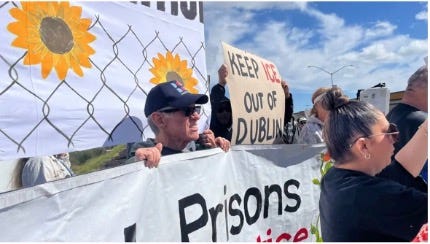


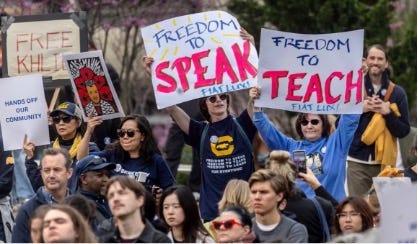
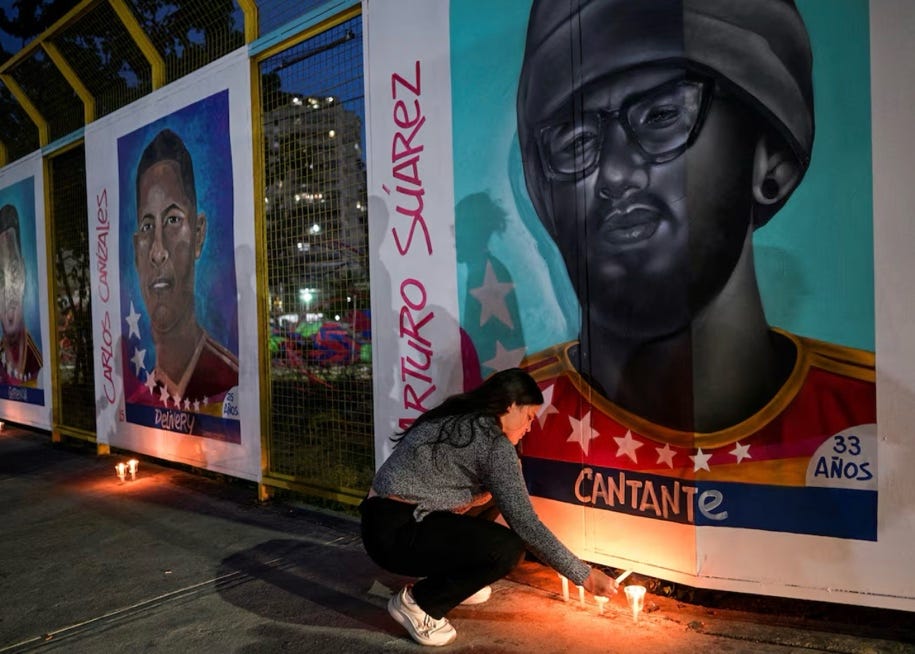

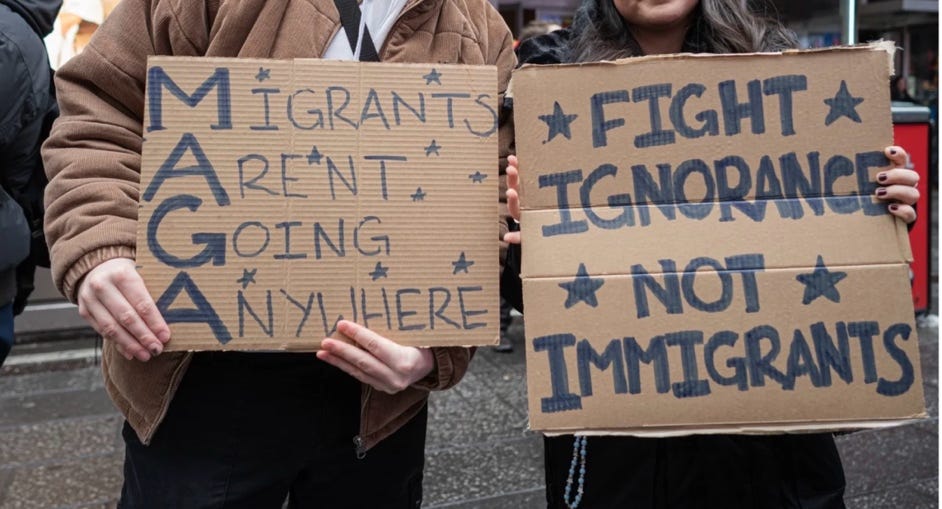

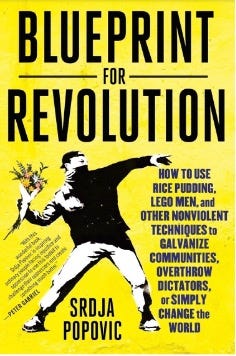

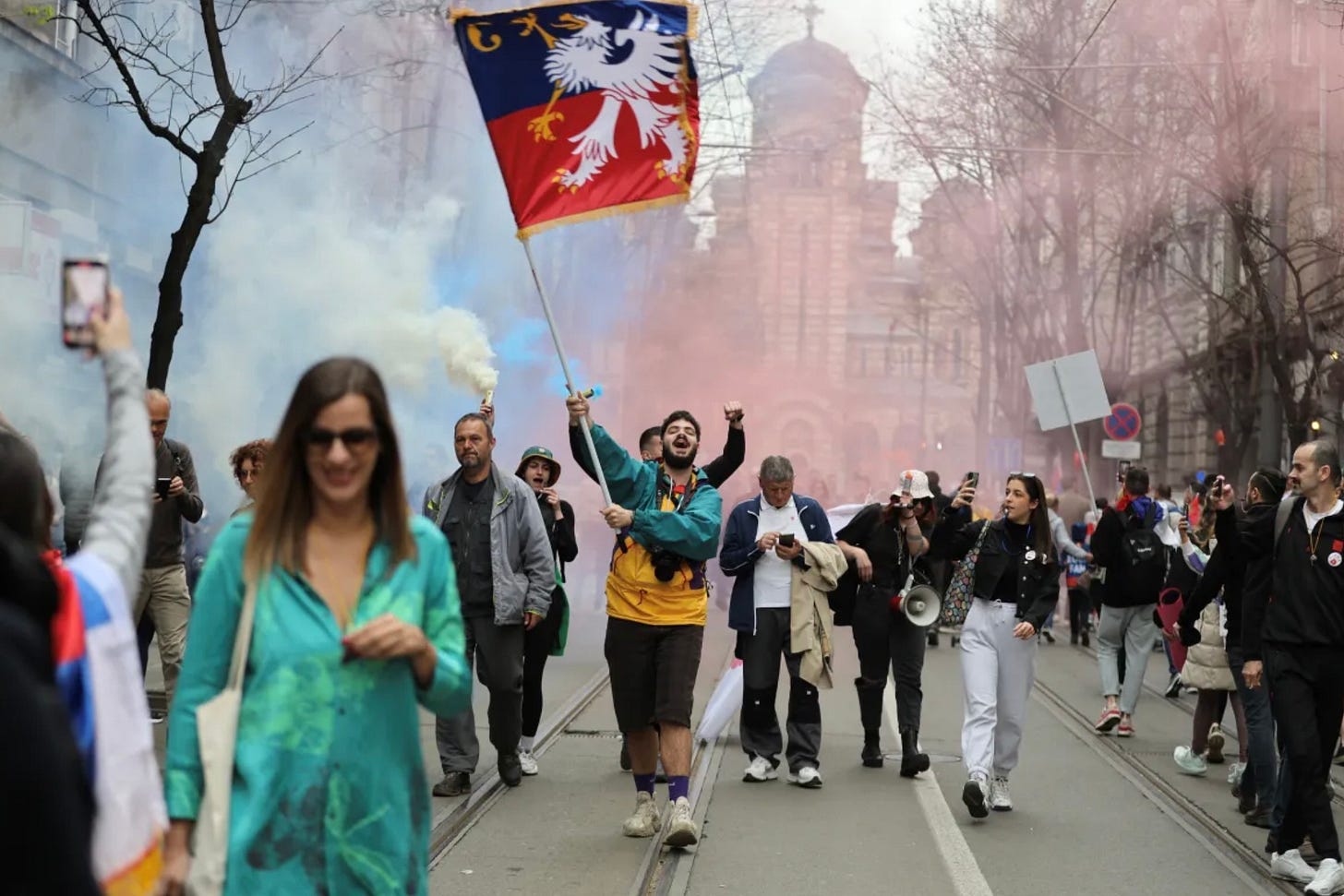


Thank you. I’ve been feeling particularly overwhelmed and this was less bleak than some other things I’ve been reading. I look forward to hearing what suggestions you draw from all the books you’re planning to read.
Also thank you for the book suggestions.